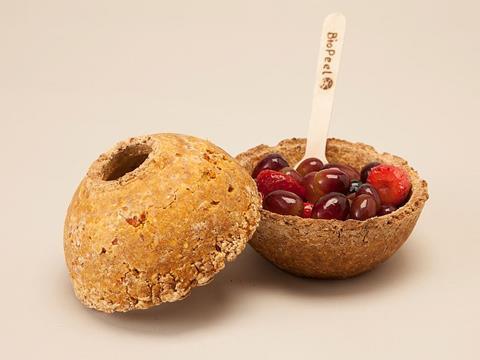
The solution to how we keep food fresh could well involve pinching a trick from nature – wrap it in an orange peel.
Bio-Peel, a new material unveiled by design student Denny Handley, a product design student at Brunel University London, blends waste orange peels with a mixture of other biodegradable products to create a new packaging material that’s strong, malleable and environmentally friendly.
“Initially I had the idea that you could use all the waste produced making one litre of orange juice to create the carton,” said Handley. “But the material itself steadily degrades in water, so I looked for other applications for it.”
The new material uses a mixture of orange peels sourced from industrial juicing waste, bio-polymers, vegetable glycerine – a by-product of bio-diesel – and water, and is hardened through a process of moulding, baking and drying.
“My aim was to replace single-use plastic alternatives with a fully biodegradable option,” said Handley, 22, from Peterborough, who showcased his product at Made in Brunel at the Bargehouse in London’s Oxo Tower.
“Developing the material was a bit like baking a cake – you add more of one type of ingredient, and a different type of cake comes out. I did a lot of testing to define what each ingredient did, and what changing each ingredient did to the final material. I could then tailor the mix to what I needed for the moulds and the final system.”The material’s opaque and rustic nature means it’s unlikely to be adopted for selling goods in the supermarket, says Handley, but is more likely to be used in situations such as farmers’ markets, delis or packing crates. It could also be used to make other hard surfaces, such as tables.
“It’s really strong – when we tested it, it took over half a tonne of compressive strength on certain samples,” said Handley.“I also shot a piece with a shotgun too, and it stopped the pellets, so maybe I should be sending it to the military.”
















